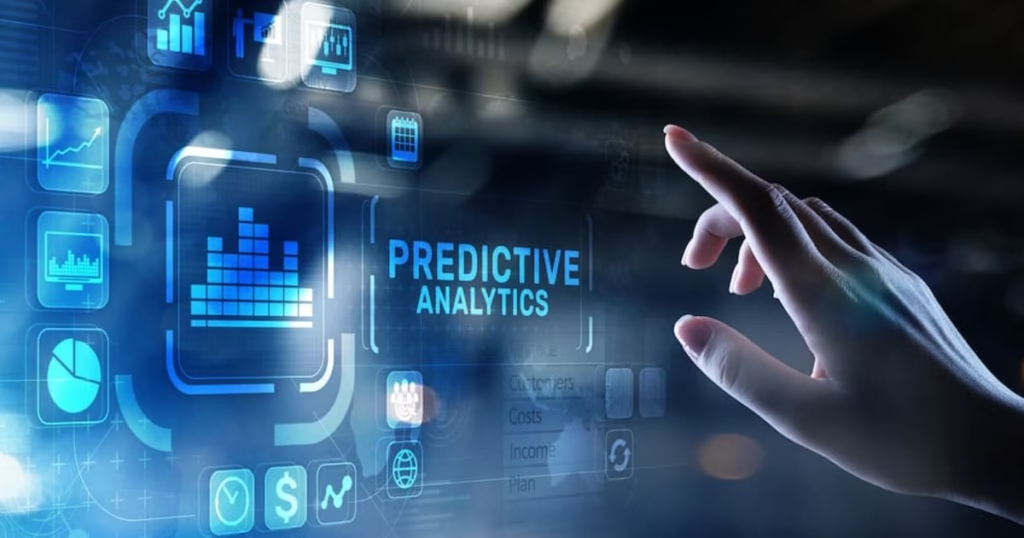For companies right now, marketing success depends largely on how fast data is turned into decisions. In an environment influenced by changing consumer behavior and evolving channels, an enormous amount of data is generated every time there’s a campaign, a click, or a conversation. The problem is not access to data-the problem is working with it efficiently and strategically.
That’s where artificial intelligence and predictive analytics come into play. They collectively are reshaping how corporations comprehend customers, forecast trends, and polish marketing strategies in their own time. This move of marketing from manual analysis to AI data analysis does not just feel like a technological upgrade; it’s a total transformation of marketing decision-making.
The Shift from Abstraction to Data-Driven Precision
For many decades, marketers would get their bats and balls and be ruled by their instinct after considering some factors over the past. Sometimes this will give them some idea as to which way to move, and sometimes it will spoil a hundred-crore opportunity in the long run. The days when traditional analytics just highlighted what had occurred and barely gave an inkling of why, so were the best.
Predictive analytics does the contrary. It uses machine learning to discover hidden patterns and correlations across vast datasets. Based on this, marketers predict the likelihood of customer churn or conversion, or lifetime value, so that they can then allocate budgets more effectively and personalize engagement strategies.
The predictive analytics field helps marketers to prognosticate developments. AI-backed data analysis, on the other hand, puts actual actions in place. An AI predicts trends in the future but keeps learning from current data, so the prediction remains concrete with evolving conditions. Such an intuitive intelligence and adaptable power create a competitive edge for modern marketing teams.
From Raw Data to Real-Time Decisions
Analytics through AI can basically automate anything that used to require hundreds or thousands of man-hours. Marketers are no longer left with the tedious job of joining spreadsheets, making sure the data is clean, or understood while waiting for a report. AI basically always-in-one-system extracts data from all the channels- social media, CRM systems, ad campaign systems, and customer interaction points- and synthesizes it into a performance view.
Such automation generates insights almost instantaneously. For example, AI will pinpoint that a campaign is experiencing anomalies, identify why wrong adjustments are being made to the campaign, and help avert huge losses. Conversely, if a new product is delighting a particular segment, the AI assists marketers in building momentum faster than ever before.
The shift is stark: AI doesn’t just make a decision; it drives one. A marketing team that would have spent 200+ hours collecting and analyzing data now wakes up to a bunch of ready-to-use, comprehensive insights available within minutes.
Beyond Prediction: Deep Analysis That Drives Strategy
While predictive analytics only anticipates outcomes, AI targets the disclosure of the “why” behind shifts in performance. Deep contextual analysis identifies those variables human analysts might have passed over, offering actionable clarity instead of just superficial forecasting.
The analytical flow runs through data ingestion and automated report generation, which produce executive summaries, root-cause insights, trend breakdowns, and recommendations. This will ensure that decisions are grounded in context and not just prediction.
Modern AI platforms like AskEnola bring this to life by automating the entire analysis cycle. They connect directly to enterprise data sources and deliver full reports and dashboards without manual efforts or SQL queries, reducing costs of analytics by almost 90% and saving hundreds of analyst hours.
Smarter Marketing Through AI-Driven Adaptability
The defining characteristic of an AI data analyst is adaptability. Such intelligent tools constantly evolve on new data, remaining accurate even with changing market trends.
If engagement drops, AI immediately spots a root cause and correlates audience behavioral variables with timing and messaging to offer ad hoc solutions. It can also personalize the campaign on a large scale by varying content based on user behavior, thereby strengthening engagement and ROI.
These traits enable the marketer to act quickly, continuously refine the strategy, and feel confident in all decisions based on evidence.
The New Era of Marketing Intelligence
AI and predictive analytics have now been placed in the perch of marketing essentials. They chew through immense datasets to expose patterns hitherto concealed and provide insights to fuel creative and strategic decisions.
The era of dashboards and manual reporting is over. Intelligent automation actually works at thought speed, allowing companies to flow from observation into action.
AskEnola is a noteworthy example of this transformative process, converting hundreds of hours of manual labor into instant automated intelligence. The future is beholden only to the marketer who analyzes data faster with AI, acts smarter, and generates measurable growth from gleaned insights.






